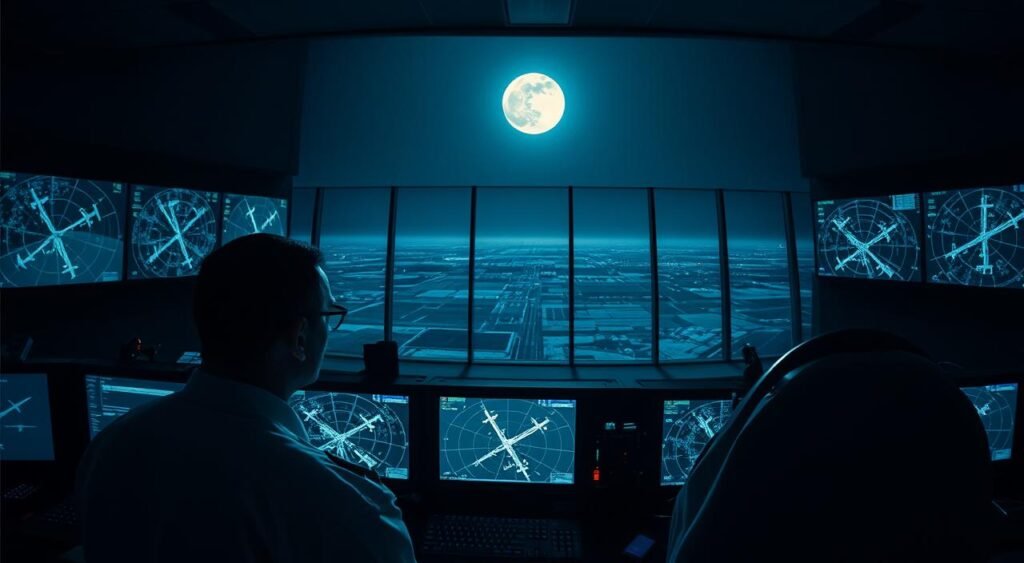The head of the Federal Aviation Administration (FAA), Bryan Bedford, has sounded an alarm, calling the U.S. air traffic control system “unacceptable.” He believes the area has suffered from decades of underinvestment and outdated technology.
This criticism stems from the pressing issues with our aviation safety system, which urges modernization and increased investment.
The FAA Administrator’s concerns center on the dangers of an outdated air traffic system that could significantly compromise the safety of air travel.
FAA Administrator’s Scathing Assessment
With 25 years of experience, Bedford is well-versed in the challenges of aviation operations. He identifies the key problems that need to be addressed to improve the air traffic control system.
Bedford’s Public Statement on System Failures
Bedford believes that the system’s failures are both technological and operational. According to him, these problems are interconnected and impact the air traffic control system’s performance.
“The air-traffic system is on the verge of a significant crisis if we don’t act now,” Bedford warned, emphasizing the need for quick action.
Technological Gaps Identified
The air traffic system still relies on outdated technology, and upgrading to modern technology is crucial for improved performance and enhanced safety. The identified technological gaps include:
- Outdated radar systems
- Insufficient automation
- Lack of real-time data sharing
Operational Inefficiencies Highlighted
Operational inefficiencies are also a big concern. These include:
- Delays in flight scheduling
- Inefficient routing of aircraft
- Inadequate staffing levels
Resolving these operational issues is crucial for reducing delays and enhancing the air traffic control experience.

The Deteriorating U.S. Air-Traffic System
The FAA chief pointed out that the U.S. air traffic system is outdated, has seen safety issues, and doesn’t meet international standards. For instance, the system still utilizes outdated technology, rendering radar monitoring and flight management less effective. It’s not just slow; it’s also a safety risk.
Comparison with International Standards
The U.S. system is behind the rest of the world. Other countries have newer radar monitoring systems that offer better safety and efficiency.
| Country | Radar Monitoring System | Implementation Year |
|---|---|---|
| USA | Legacy System | 1990 |
| Europe | Advanced Radar | 2010 |
| Japan | Modern Surveillance | 2015 |
Impact on Daily Flight Operations
Outdated technology causes delays and requires air traffic controllers to work harder. Only new flight management systems could address the issue.

Recent Safety Incidents and System Failures
Recent incidents of system failure have raised concerns among the public and industry, signaling that the delay in modernization could further erode public confidence.
Funding Initiatives and Modernization Plans
The FAA has a detailed plan for system upgrades and has initially earmarked $12.5 billion to modernize the air traffic system. The Congress has already allocated funds for the system upgrades.
According to the plans, they will utilize the money allocated to improve infrastructure and implement new technologies.
According to reports, the FAA will begin with Automatic Dependent Surveillance-Broadcast (ADS-B), which is expected to enhance air traffic management efficiency.
Benefits of ADS-B
ADS-B enhances situational awareness for pilots and air traffic controllers by providing real-time aircraft position, altitude, and weather information, improving safety and reducing collision risks.
It enables more efficient airspace management, leading to shorter routes and fewer delays, while also offering cost-effective surveillance in areas lacking traditional radar coverage.
Additionally, ADS-B aids emergency search and rescue operations and lays the groundwork for future advancements in air traffic management.
Additional $19 Billion Request for Complete Overhaul
The FAA also requests an additional $19 billion for a comprehensive overhaul of its system. Most of the extra money will be allocated to technology upgrades, including ADS-B and automation, which are crucial for better air-traffic control and traffic flow management.
Expected Benefits of Full Modernization
Full modernization will bring many benefits, including safer air travel, reduced delays, and increased capacity. All these will help enhance air traffic management for greater efficiency and reliability, and in turn bring increased public confidence and industry growth.
Bedford’s Background and Leadership Approach

Bedford, the new FAA head, has about 25 years of experience in airspace management and aviation leadership. His vast experience prepares him to tackle the FAA’s current challenges.
Initial Response from Industry Stakeholders
Industry stakeholders welcome Bedford’s appointment, as they view his expertise in airspace management as a positive boost to the sector. His ability to bring changes is seen as a solution to the FAA’s lingering issues.
Impact Analysis and Future Challenges
The future of aviation safety is at risk due to the long-standing flaws in the air traffic system, and we must address these issues promptly. The FAA’s comprehensive plans for infrastructure and technological updates are key to making flying safer and the industry on the growth path.
Safety Improvement Dependencies
Improving air traffic safety depends on several key factors, including the adoption of advanced technology and enhanced automation.
Critical System Upgrades Required
Using Automatic Dependent Surveillance-Broadcast (ADS-B) is vital, as it enhances situational awareness for pilots and air traffic controllers by providing real-time aircraft positions and helping to avoid crashes.
Passenger Safety Implications
If we don’t update the system, flying could get much riskier. Old tech increases the chance of accidents.
Air Traffic Controller Morale and Staffing Issues
The morale of air traffic controllers is crucial for air traffic safety. However, they face challenging working conditions, with outdated infrastructure and system support, compounded by staff shortage.
Recruitment and Retention Challenges
In the given situation, the FAA continues to struggle with finding and retaining controllers. The job is stressful and highly demanding.
Political Hurdles for Securing Bipartisan Support
Securing bipartisan support for air traffic updates is also challenging, and the FAA must focus on this area as well to overcome the political hurdles to getting the timely and adequate funding support.
Congressional Perspectives
We cannot overlook the fact that Congress must rise to the occasion and provide funding support for system updates, as they are of paramount importance for ensuring the safety of air travel for all.
Industry Lobbying Efforts
The aviation industry’s lobbying efforts are justified in pushing for initiatives, including funding support for air traffic system updates, to ensure interoperability and safety.
Industry stakeholders must play their roles to facilitate the development and implementation of new technologies and procedures for smooth air traffic management.
Their involvement supports the optimization of traffic flows and the improvement of air navigation services by suggesting alternative trajectories.
Conclusion: A New Urgency for Aviation Infrastructure
The FAA chief has spoken out about the U.S. air-traffic system’s problems. This has brought a new sense of urgency. Everyone hopes to capitalize on this momentum to make lasting changes.
The need for modernization is obvious. Efficient aviation operations are key. The FAA must work diligently to address the system’s issues.
With $12.5 billion already approved and an additional $19 billion requested, significant changes are forthcoming. The success of these efforts will depend on their successful implementation and consistent stakeholder support.



